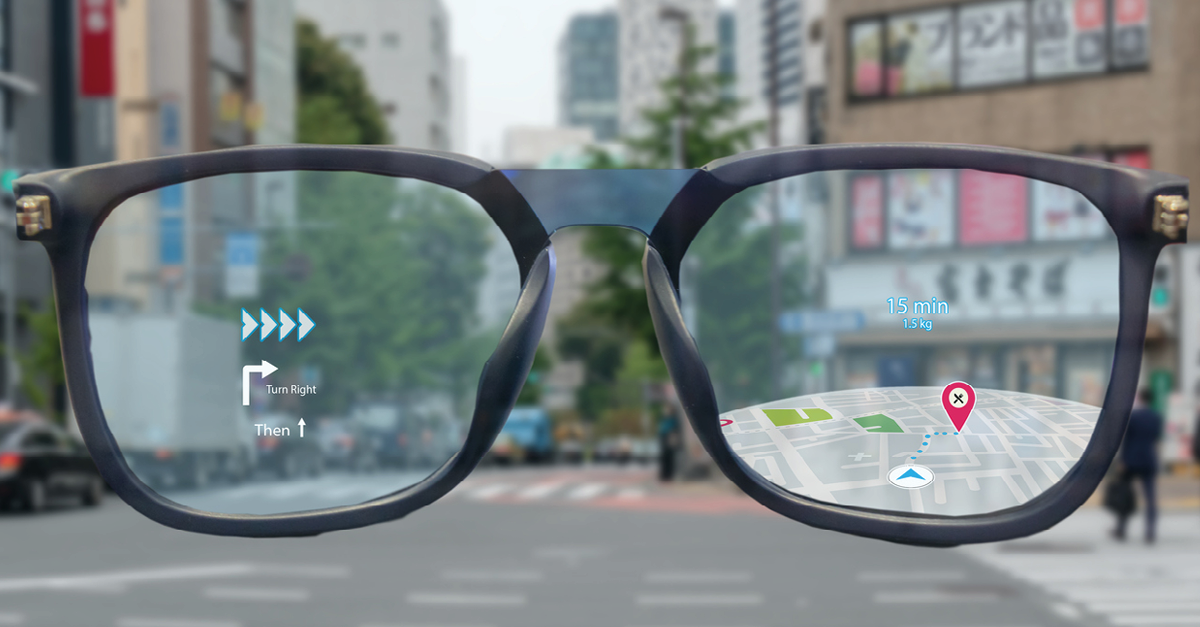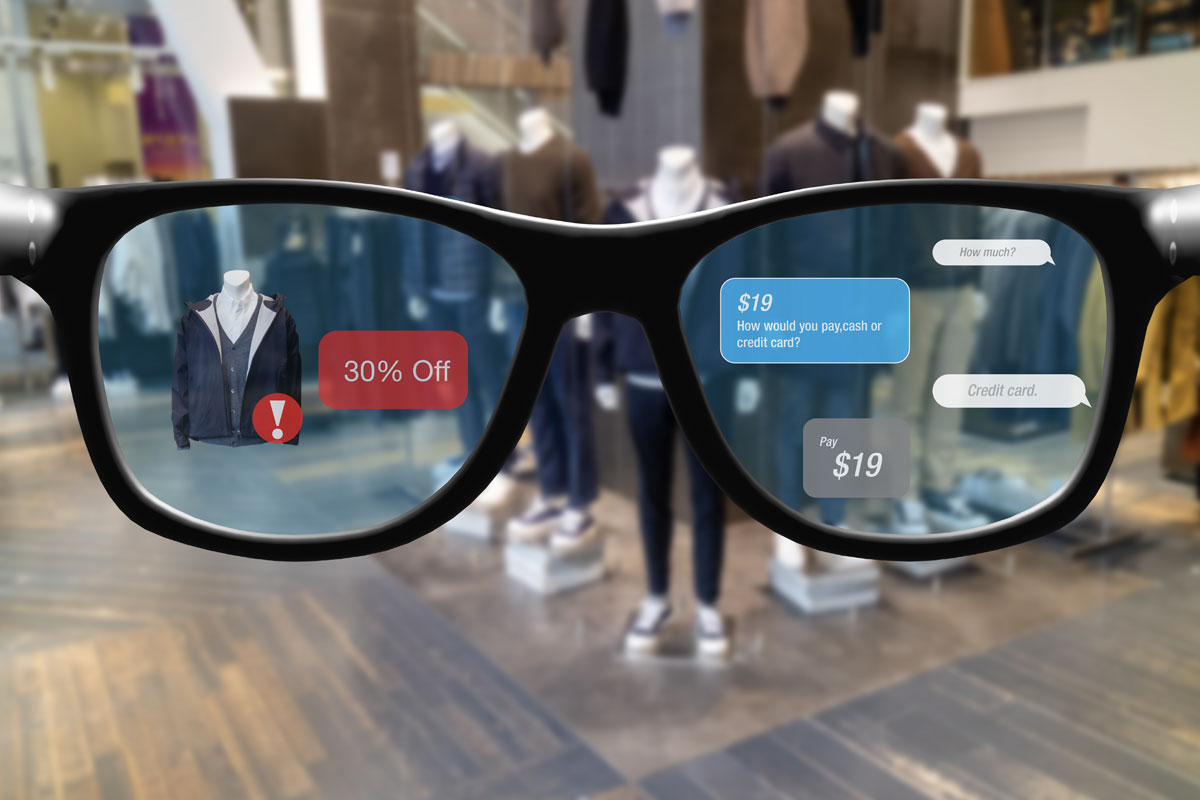Smart glasses and AR glasses often confuse people. They sound similar but serve different purposes.
Understanding the difference helps you choose the right technology for your needs. Smart glasses offer basic features like notifications and fitness tracking. They connect with your smartphone to display information. AR glasses, on the other hand, provide an interactive experience.
They overlay digital content onto the real world, enhancing what you see. Knowing these differences is important. It helps you decide which technology fits your lifestyle or work. This blog will delve deeper into their unique features, making your decision easier. Let’s explore the key differences together.
Technological Foundations
Understanding the technological foundations of smart glasses and AR glasses is key to recognizing their unique features. Both devices might seem similar at a glance, but they have distinct technological differences that set them apart. Let’s explore these differences under the core technologies of each.
Core Technologies In Smart Glasses
Smart glasses integrate tiny computers into wearable glasses. They often have built-in cameras, microphones, and speakers. These glasses focus on delivering notifications, taking photos, and enabling hands-free calls. They use basic augmented reality (AR) to overlay simple data. The technology is designed for convenience and connectivity.
Core Technologies In Ar Glasses
AR glasses focus on merging digital information with the real world. They use advanced sensors, cameras, and display systems. These glasses project complex holograms and interactive 3D models. They rely on precise tracking to blend virtual elements seamlessly with physical surroundings. The technology aims to enhance real-world interaction with digital data.
Primary Functions
When we talk about wearable technology, smart glasses and AR glasses often come up. They may look similar, but their primary functions set them apart. Understanding these differences can help you make better decisions when choosing between them.
Functions Of Smart Glasses
Smart glasses are designed to make your life easier. Think of them as an extension of your smartphone.
They can display notifications, texts, and emails directly in front of your eyes. This means you can stay connected without constantly checking your phone.
Another primary function is hands-free calling. You can make and receive calls through voice commands, keeping your hands free for other tasks.
Many smart glasses also have fitness tracking features. They can monitor your steps, heart rate, and even offer workout tips.
Imagine you’re out for a jog. You get a call and see it right in front of you. No need to stop and check your phone. That’s the convenience smart glasses bring.
Functions Of Ar Glasses
AR glasses are all about enhancing your reality. They overlay digital information onto the real world.
You can see directions and navigation prompts while walking, without ever looking at your phone.
These glasses are also great for gaming. They create immersive experiences by adding digital elements to your surroundings.
Picture this: You’re playing a game where creatures appear in your living room. You interact with them as if they’re actually there. AR glasses make this possible.
They’re also used in professional settings. For example, doctors can see patient data while performing surgery, without looking away from the patient.
AR glasses can change how you interact with the world. They bring digital elements into your daily life, making ordinary tasks more engaging.
What would you choose? Smart glasses for convenience or AR glasses for enhanced experiences?
User Experience
Smart glasses enhance daily tasks with notifications and simple interactions. AR glasses overlay digital information onto the real world, providing immersive experiences.
The user experience is crucial in differentiating between smart glasses and AR glasses. Both offer unique interactions and benefits. Understanding these differences can help users choose the right device for their needs.User Interface In Smart Glasses
Smart glasses focus on providing a seamless interface. They often display information directly in the user’s field of vision. Users can see notifications, navigation, and other data without looking at their phones. Some smart glasses use voice commands for hands-free control. Others may have touchpads on the frames for input. The main goal is to keep interactions simple and intuitive.User Interface In Ar Glasses
AR glasses provide a more immersive experience. They overlay digital content onto the real world. Users can interact with virtual objects as if they exist in their surroundings. These glasses often use advanced sensors and cameras. This technology tracks the user’s movements and surroundings. The interface can include gestures, voice commands, and even eye-tracking. AR glasses aim to blend the digital and physical worlds seamlessly. “`
Credit: www.vuzix.com
Applications
When it comes to technology, smart glasses and AR glasses are at the forefront of innovation. These devices have found their way into various applications, transforming both our daily lives and numerous industries. But what are the specific uses of each? Let’s dive into the practical applications of smart glasses and AR glasses.
Smart Glasses In Daily Life
Smart glasses are becoming an essential part of everyday life. They help you stay connected without constantly checking your phone. Imagine getting notifications or reading text messages right in front of your eyes while you’re on the go.
Fitness enthusiasts use smart glasses to track their workouts. They can see their heart rate, distance covered, and even get navigation directions during a run. This hands-free experience makes exercising more enjoyable and efficient.
Consider the convenience of taking photos or recording videos just by saying a command. Smart glasses allow you to capture moments effortlessly. It’s like having an extra pair of eyes that can remember everything for you.
Ar Glasses In Various Industries
AR glasses are making waves in multiple industries. In healthcare, they assist surgeons with real-time data during operations. This can lead to more precise and successful surgeries, saving lives.
In manufacturing, AR glasses provide workers with step-by-step instructions. They can see assembly guides overlaid on the actual product, reducing errors and speeding up production. This is a game-changer for efficiency.
Retail is also benefiting from AR glasses. Customers can try on clothes virtually without stepping into a fitting room. This not only enhances the shopping experience but also reduces return rates. Imagine knowing exactly how that jacket will look on you before you buy it.
So, which of these applications excite you the most? Smart glasses might streamline your daily tasks, while AR glasses could transform your professional life. Both are pushing the boundaries of what’s possible, but their impact depends on how we choose to use them.
Market Trends
Understanding market trends for smart glasses and AR glasses can help you make informed decisions. Both technologies are growing, but their markets differ. Let’s explore these differences.
Current Market For Smart Glasses
Smart glasses have been on the market for several years. Their primary function includes displaying notifications and basic information. They are used in fields such as healthcare and manufacturing. Many brands offer smart glasses with varied features. These glasses are gaining popularity among tech enthusiasts. Prices for smart glasses have become more affordable. This makes them accessible to a broader audience. They are also seen as a fashion statement by some users.
Current Market For Ar Glasses
AR glasses are newer compared to smart glasses. They overlay digital content onto the real world. This technology is used in gaming, education, and retail. Companies are investing heavily in AR technology. The market for AR glasses is still growing. It is expected to expand rapidly in the coming years. Current AR glasses are more expensive. They are mainly targeted at professionals and businesses. As the technology improves, prices are likely to drop. This will make AR glasses more accessible to the general public.

Credit: www.xmreality.com
Future Prospects
The future of wearable technology is bright. Both smart glasses and AR glasses are evolving. These advancements will shape how we interact with the world. They promise to make our lives easier and more connected. But what specific innovations are on the horizon for these devices? Let’s explore.
Innovations In Smart Glasses
Smart glasses are becoming more user-friendly. They are getting lighter and more comfortable. Battery life is improving, allowing longer use. New designs are more stylish, making them suitable for daily wear.
Voice control is a key feature. It lets users interact with their glasses hands-free. This is useful for making calls, sending texts, or getting directions. Integration with other smart devices is also advancing. Smart glasses can now connect with smartphones, smartwatches, and home assistants.
Another area of innovation is health monitoring. Some smart glasses can track your steps, monitor your heart rate, and even measure your sleep quality. This makes them a valuable tool for health and fitness enthusiasts.
Innovations In Ar Glasses
AR glasses are also seeing rapid advancements. The quality of the augmented reality experience is improving. Graphics are becoming more realistic. This makes virtual objects blend seamlessly with the real world.
One exciting development is spatial audio. This technology allows sound to come from specific locations. It enhances the immersive experience of AR. For example, you can hear a virtual bird chirping from its exact location in your view.
AR glasses are also getting smarter. They can recognize objects and people. They can provide information about what you see. Imagine walking into a store and getting instant details about products. This could change the way we shop and interact with our environment.
Finally, AR glasses are exploring new applications. They are being used in education, healthcare, and industry. In schools, they can create interactive learning experiences. In healthcare, they assist in surgeries and patient care. In industry, they improve training and productivity.

Credit: ambiq.com
Frequently Asked Questions
Are Smart Glasses And Ar Glasses The Same?
Smart glasses and AR glasses are not the same. Smart glasses offer basic features, while AR glasses provide immersive augmented reality experiences.
What Is The Disadvantage Of Smart Glasses?
Smart glasses can be expensive and may cause eye strain. Privacy concerns arise due to their recording capabilities. Some users find them uncomfortable to wear for long periods. Battery life is often limited.
Can You Watch Netflix On Ar Glasses?
Yes, you can watch Netflix on AR glasses. Some AR glasses support streaming apps like Netflix, offering an immersive experience.
What’s The Point Of Smart Glasses?
Smart glasses integrate technology into eyewear. They offer hands-free access to information, notifications, and augmented reality. Enhance productivity and convenience.
Conclusion
Understanding the differences between smart glasses and AR glasses helps make informed choices. Smart glasses offer basic features like notifications and calls. AR glasses provide immersive experiences with augmented reality. Choose smart glasses for simple tasks and everyday use. Opt for AR glasses for advanced applications and interactive experiences.
Both have unique benefits based on your needs. Exploring both options ensures you pick the right technology. Enjoy the exciting world of wearable tech!
